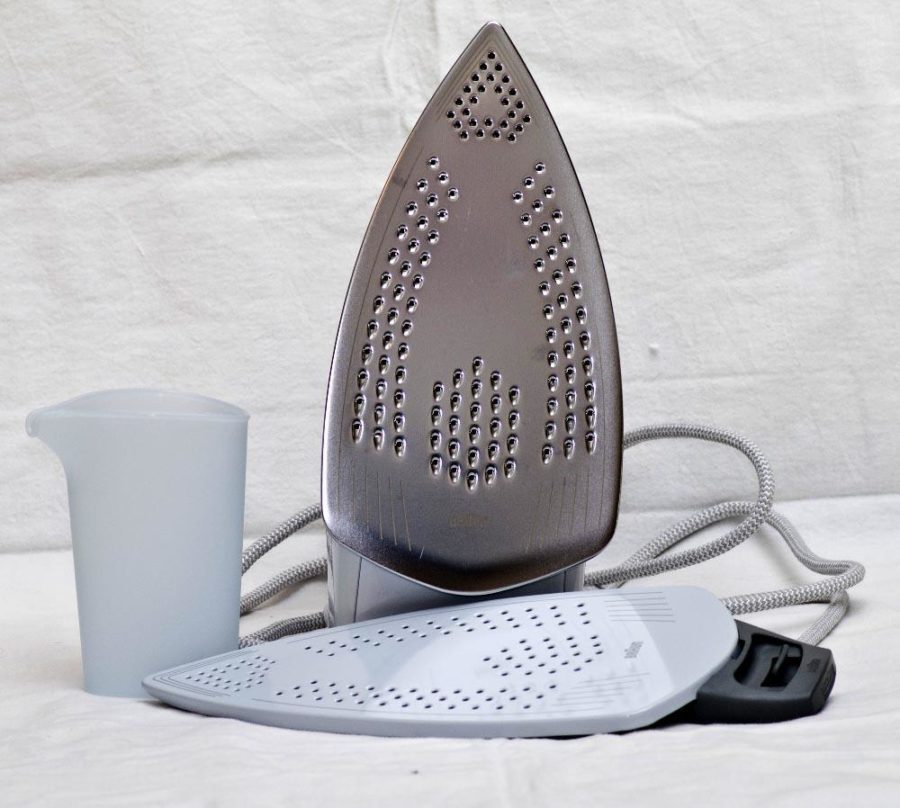With the development of science and technology, household appliances are becoming more and more complicated, seriously making meaningful choices when acquiring. This happened with the irons, many heard in the advertisement the phrase Ceranium glissee, but what is hidden behind these words, few can explain right away.
This development belongs to the specialists of the company Bosh. Stainless steel in conjunction with a ceramic coating of the work surface gave a stunning result. The sole glides so well over any type of fabric that it cannot be distinguished from a purely ceramic, but the strength characteristics and weight are not much lower than that of steel. It is necessary to dwell in more detail on the advantages and disadvantages of such a design.

Iron Material Competition
Stainless steel has virtually squeezed aluminum out of the market, as previously happened with cast iron. It is not inferior to it in thermal conductivity, is strong, durable and even cheaper, but it has one drawback: it glides and clings to things made of delicate fabric not so smoothly. Bosch has come up with a solution to this problem: enamel and ceramic coating. Polished ceramics can achieve a level of glide that metal soles have never dreamed of, so it has become very widespread as a separate material for the production of irons. So consistently appeared models whose soles were made using the following technologies: Ceranium glissee, Granit glissee and Palladium glissee.
Ceranium glissee by Bosch
Bosch has made major strides in joining two different materials in the soleplate. Stainless steel and ceramic coating of the outer surface are almost a single whole, which allows you to take advantage of both materials and level the disadvantages of each of them.
Irons with soles made using Ceranium glissee technology received the following advantages:
- The ceramic part glides perfectly along the fabric, without spoiling even the most delicate products. Its properties do not change over time, ceramics even after the expiration of the warranty period will look and iron just like after a purchase. Nothing sticks to it and does not stick, particles of textiles and other impurities are easily removed during the care of the sole.
- The strength of ceramics ensures the durability of the working surface, it is not afraid of contact with zippers and buttons on clothes. In the absence of an impact load, microscopic damage and cracks do not appear in it, as in aluminum.
- High-quality alloy steel conducts heat well, evenly heats up when turned on, which allows such an iron to quickly and efficiently smooth the fabric.
The combination of two different materials reduced the significance of their shortcomings, but did not completely eliminate the problem:
- The fragility characteristic of purely ceramic irons has not disappeared. In the case of a Bosch device, direct mechanical stress will seriously damage and possibly damage it. Designers are constantly working on various tricks to prevent destruction, so there was a side on the sides of the sole, which protects it from accidental contact with clothing accessories.
- The cost of an iron with a sole made using Ceranium glissee technology is higher than similar models with different types of soles. You have to pay for quality, but you can be sure that it will last longer than its counterpart.
Why glissee?
If the purpose of buying an iron is maximum versatility, durability and quality, then ceramic with metal is the preferred option. Durability will not allow you to notice a higher price, as you can be sure of the long life of such irons. If we compare the model from Bosch with other manufacturers, then in terms of price / quality ratio, it will leave them behind, which once again speaks in favor of the “keranium” or “palladium” technologies.